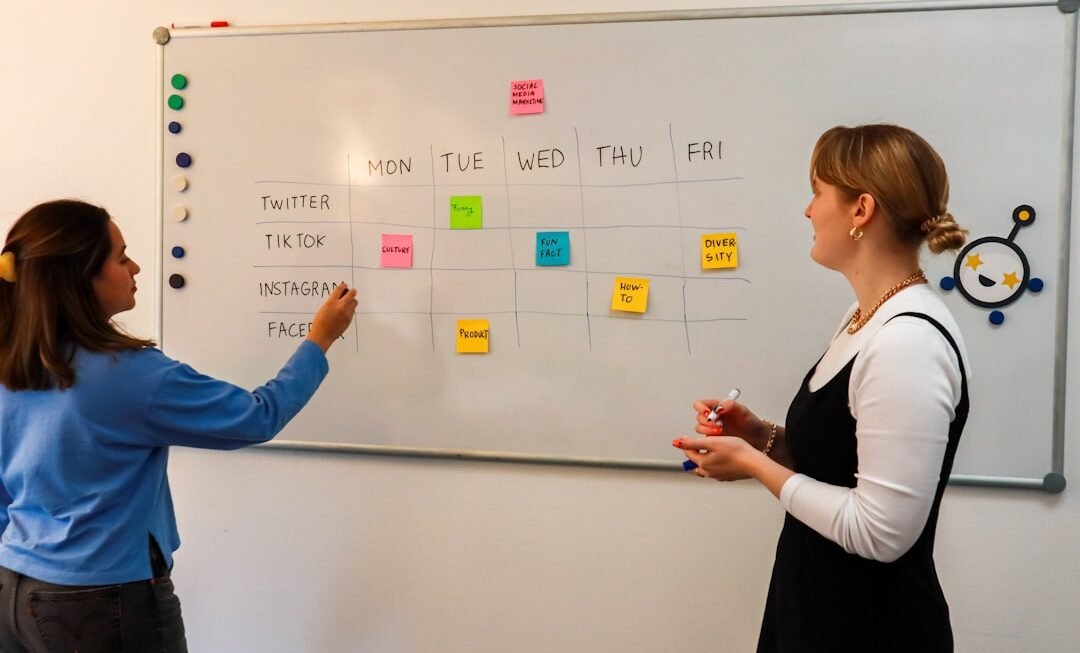The landscape of education has undergone a profound transformation in the digital age, driven by rapid advancements in technology and the increasing accessibility of information. Historically, education was predominantly a face-to-face experience, characterized by traditional classroom settings where students and teachers interacted directly. However, the advent of the internet and digital tools has revolutionized this paradigm, enabling new forms of learning that transcend geographical boundaries.
Online courses, virtual classrooms, and educational apps have emerged as viable alternatives to conventional teaching methods, allowing learners to access resources and knowledge at their convenience. As technology continues to evolve, so too does the approach to education. The integration of multimedia resources, interactive platforms, and collaborative tools has enriched the learning experience, catering to diverse learning styles and preferences.
For instance, platforms like Khan Academy and Coursera have democratized access to high-quality educational content, allowing learners from various backgrounds to engage with subjects that interest them. This shift towards digital education has not only expanded the reach of educational institutions but has also fostered a culture of lifelong learning, where individuals can pursue knowledge beyond the confines of formal schooling.
The Benefits of Hybrid Learning Models
Hybrid learning models, which combine traditional in-person instruction with online components, offer a range of benefits that enhance the educational experience. One of the most significant advantages is flexibility. Students can learn at their own pace, accessing online materials and resources when it suits them best.
This flexibility is particularly beneficial for non-traditional students who may be balancing work or family commitments alongside their studies. By allowing learners to tailor their educational experiences to fit their individual needs, hybrid models promote greater engagement and motivation. Moreover, hybrid learning fosters a more personalized approach to education.
Instructors can utilize data analytics to track student progress and identify areas where additional support may be needed. This data-driven approach enables educators to provide targeted interventions, ensuring that each student receives the assistance necessary to succeed. Additionally, the blend of online and in-person instruction encourages collaboration among students, as they can engage in discussions and group projects both in the classroom and through digital platforms.
This collaborative environment not only enhances critical thinking skills but also prepares students for the realities of a workforce that increasingly values teamwork and communication.
How Hybrid Learning Models Are Reshaping Traditional Education
The integration of hybrid learning models is fundamentally reshaping traditional education by challenging long-standing assumptions about how teaching and learning should occur. In many cases, hybrid models are prompting educators to rethink their pedagogical strategies and embrace innovative approaches that prioritize student engagement and active learning. For example, flipped classrooms—where students review lecture materials online before attending in-person sessions—allow for more interactive and hands-on activities during class time.
This shift encourages students to take ownership of their learning while enabling teachers to facilitate deeper discussions and collaborative projects. Furthermore, hybrid learning models are breaking down the barriers between different educational institutions. Students can now access courses from universities around the world without the need for physical relocation.
This globalization of education not only enriches the learning experience but also fosters cultural exchange and understanding among diverse student populations. As a result, traditional educational institutions are increasingly recognizing the need to adapt their curricula and teaching methods to remain competitive in an evolving landscape.
Overcoming Challenges in Implementing Hybrid Learning Models
Despite the numerous advantages of hybrid learning models, implementing them effectively presents several challenges that educators and institutions must navigate. One significant hurdle is ensuring that both students and teachers are adequately equipped with the necessary technological skills. While many students are digital natives, not all possess the same level of proficiency with online learning tools.
Educators must therefore invest time in training both themselves and their students to utilize these technologies effectively, ensuring that everyone can fully participate in the hybrid learning experience. Another challenge lies in maintaining student engagement across both online and in-person components of the curriculum.
To address this issue, instructors must develop strategies that seamlessly integrate online activities with face-to-face interactions. This may involve designing assignments that require collaboration between remote and in-person students or utilizing technology to facilitate real-time discussions during class sessions. By fostering a sense of community among all learners, educators can help mitigate feelings of isolation that may arise in hybrid environments.
The Role of Technology in Hybrid Learning Environments
Technology plays a pivotal role in the success of hybrid learning environments, serving as both a facilitator and an enhancer of educational experiences. Learning management systems (LMS) such as Canvas or Moodle provide a centralized platform for course materials, assignments, and communication between students and instructors. These systems enable educators to organize content efficiently while allowing students to access resources anytime and anywhere.
Additionally, tools like Zoom or Microsoft Teams facilitate real-time interaction during virtual classes, bridging the gap between remote learners and those present in the classroom. Moreover, technology enables the incorporation of diverse multimedia resources into the curriculum. Educators can leverage videos, podcasts, interactive simulations, and gamified learning experiences to engage students more effectively.
For instance, using virtual reality (VR) technology can transport students to historical sites or scientific environments that would otherwise be inaccessible.
As technology continues to advance, its role in hybrid learning environments will likely expand further, offering even more innovative ways to engage students.
Strategies for Engaging Students in Hybrid Learning Settings
Engaging students in hybrid learning settings requires intentional strategies that cater to diverse learning preferences while fostering a sense of community among participants. One effective approach is to incorporate active learning techniques that encourage student participation and collaboration. For example, educators can use breakout rooms during virtual sessions to facilitate small group discussions or problem-solving activities.
This not only allows students to interact with their peers but also promotes critical thinking as they work together to tackle complex issues. Another strategy involves leveraging gamification elements within the curriculum. By incorporating game-like features such as points, badges, or leaderboards into assignments or assessments, educators can motivate students to engage more deeply with the material.
This approach taps into intrinsic motivation by making learning feel more dynamic and rewarding. Additionally, providing opportunities for student choice—such as allowing learners to select project topics or presentation formats—can further enhance engagement by giving them ownership over their educational journey.
The Impact of Hybrid Learning on Student Achievement
Research indicates that hybrid learning models can positively impact student achievement when implemented effectively. By combining the strengths of both online and in-person instruction, these models create a more comprehensive learning experience that caters to individual needs. Studies have shown that students who participate in hybrid courses often demonstrate improved academic performance compared to those enrolled solely in traditional or online classes.
This improvement can be attributed to factors such as increased flexibility, personalized support from instructors, and enhanced opportunities for collaboration. Moreover, hybrid learning environments often promote greater self-regulation among students. As learners navigate both online and face-to-face components of their education, they develop essential skills such as time management, goal setting, and self-assessment.
These skills are crucial not only for academic success but also for future career endeavors where autonomy and accountability are valued traits. Consequently, hybrid learning not only enhances immediate academic outcomes but also equips students with competencies that will serve them well beyond their formal education.
Addressing Equity and Access in Hybrid Learning Environments
While hybrid learning models offer numerous benefits, they also raise important questions about equity and access within education. Disparities in technology access can create significant barriers for some students, particularly those from low-income backgrounds or rural areas where internet connectivity may be limited. To address these challenges, educational institutions must prioritize equitable access to technology by providing devices and internet support for underserved populations.
Additionally, it is essential for educators to consider diverse learning needs when designing hybrid curricula. This includes accommodating students with disabilities or those who may require additional support due to language barriers or varying levels of prior knowledge. By implementing universal design principles—such as offering multiple means of representation and engagement—educators can create inclusive hybrid environments that cater to all learners.
Ensuring equity in hybrid learning is not just a matter of access; it is about fostering an environment where every student has the opportunity to thrive.
Best Practices for Blending Virtual and In-Person Instruction
To maximize the effectiveness of hybrid learning models, educators should adopt best practices that facilitate seamless integration between virtual and in-person instruction. One key practice is establishing clear communication channels between students and instructors. Regular check-ins through announcements or discussion boards can help keep learners informed about expectations while fostering a sense of connection within the classroom community.
Another best practice involves designing assessments that reflect both online and face-to-face components of the curriculum. For instance, educators might create projects that require collaboration between remote and in-person students or utilize digital tools for peer feedback on assignments. By aligning assessments with the hybrid model’s objectives, educators can ensure that all students are evaluated fairly based on their engagement across different modalities.
The Future of Education: Embracing Hybrid Learning Models
As we look toward the future of education, it is clear that hybrid learning models will play an increasingly prominent role in shaping how knowledge is delivered and acquired. The ongoing evolution of technology will continue to influence educational practices, enabling even more innovative approaches to teaching and learning. Institutions that embrace hybrid models will likely find themselves better equipped to meet the diverse needs of their student populations while remaining competitive in an ever-changing landscape.
Moreover, as societal attitudes toward education shift—particularly following the global pandemic—there is a growing recognition of the value of flexibility and adaptability within educational systems. Hybrid learning offers a pathway toward more personalized education that prioritizes student agency while fostering collaboration among peers. As educators continue to refine their practices within this framework, we can expect to see a more dynamic and inclusive approach to education emerge.
Navigating the Transition to Hybrid Learning: Tips for Educators and Administrators
Transitioning to hybrid learning requires careful planning and consideration from both educators and administrators alike. One essential tip is to start small by piloting hybrid courses before scaling up across entire programs or institutions. This allows educators to identify potential challenges early on while gathering feedback from students about their experiences.
Additionally, fostering a culture of collaboration among faculty members can enhance the transition process significantly. By sharing best practices, resources, and insights gained from their own experiences with hybrid teaching, educators can support one another as they navigate this new landscape together. Professional development opportunities focused on hybrid pedagogy can also equip teachers with the skills necessary for success in this evolving environment.
Ultimately, successful implementation of hybrid learning models hinges on ongoing reflection and adaptation based on student feedback and outcomes. By remaining open to change while prioritizing student needs at every step along the way, educators can create enriching hybrid experiences that empower learners for years to come.












